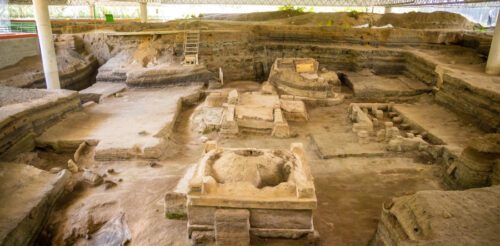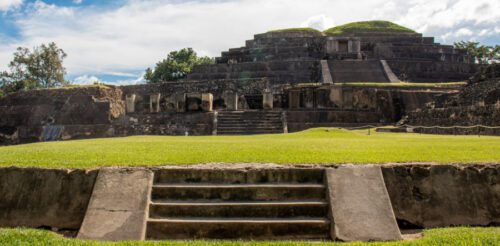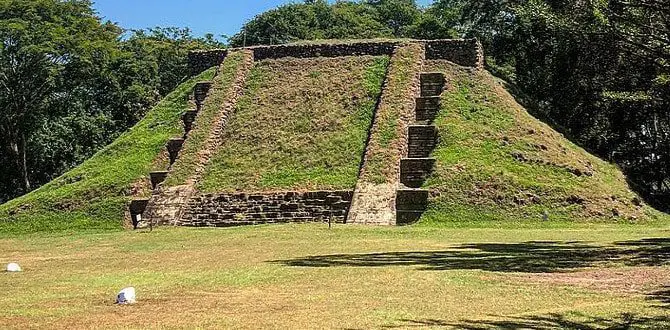
Cihuatan El Salvador is an extensive Pre-Columbian archaeological site located in the central part of El Salvador. The Cihuatan Mayan ruins have more than 180 acres, making it the most comprehensive archaeological site in the country.
The Cihuatan archaeological site is located near the small town of Aguilares, about 24 kilometers from Suchitoto and about 30 kilometers from the nation’s capital, San Salvador.
Cihuatan is the most extensive archaeological site in El Salvador. The city is ideally located on a broad hill that overlooks the vast valley formed by the Acelhuate and Lempa rivers.
Visiting Cihuatan El Salvador.
If you have the chance, you should visit Cihuatan; it is one of the most spectacular and important archaeological treasures in El Salvador.
The archaeological park of Cihuatan was inaugurated in November 2007, and it has plenty of buildings to see and appreciate. Additionally, the site is not that far away from the country’s capital.
At Cihuatan, in addition to the pyramids and other structures, you will also be able to enjoy the Interpretive Center and the Antonio Sol Museum.
The Interpretive Center and the museum have plenty of information to help you know more about Cihuatan and its people.
At this archaeological site, you will see and appreciate the ceremonial centers, the pyramids, the ball courts, the palaces, and other buildings.
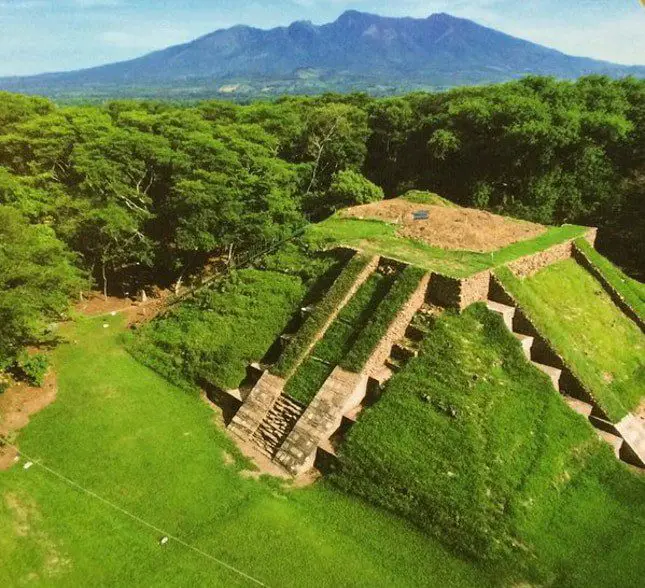
About Cihuatan El Salvador.
Cihuatan was an urban settlement that included a large number of houses, temples, and palaces.
Its impressive center covers over 70 acres and is split into two parts; the Acropolis, also called the Eastern Ceremonial Center, and the Western Ceremonial Center.
The Western Ceremonial Center.
The Western Ceremonial Center holds the main pyramid of the area; it has two Mesoamerican ballcourts and numerous platforms facing west that basically sustained other structures.
The archeologist concluded that the architectural styles of the Western Ceremonial Center confirmed the influence of Veracruz architectural styles in Cihuatan.
Lastly, radiocarbon dating implies that the Western Ceremonial Center was first built during the 8th or early-9th century AD.
The Eastern Ceremonial Center or Acropolis.
The Eastern Ceremonial Center has similarities to the Western Ceremonial Center; however, it is architecturally distinct in both the style and the plan. The Acropolis or Eastern Ceremonial Center is a large platform where several buildings are located.
The excavations on the Eastern Ceremonial Center of 2005 confirmed the existence of the palace on the Acropolis. This structure, in many ways, had a general layout and architectural features similar to structures from central Mexico.
This building had a flat masonry roof sustained upon walls and thick columns built with adobe bricks. This type of palace, known as Tecpan, is typical of central Mexico, where its antecedents reach back many centuries before the Spanish conquest.
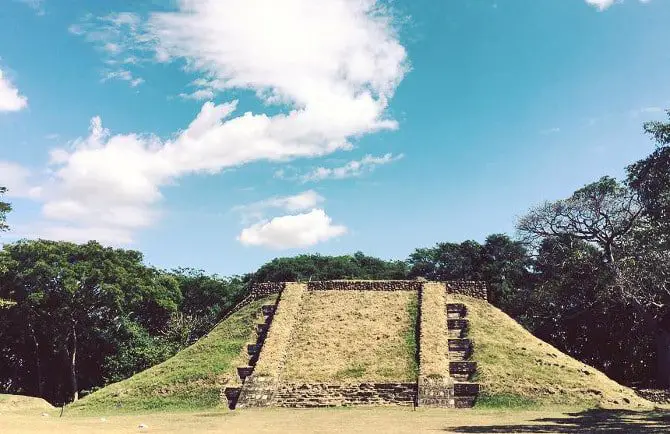
History of Cihuatan El Salvador.
According to historians, Cihuatan was founded, on a previously uninhabited site, around the 8th or 9th century AD. However, the occupation of this area was short; it didn’t last more than a century or so.
Historians also believe that the city’s establishment concurs with the abandonment of major Classic period cities in the surrounding region, which had substantial ties to the Maya cities of Honduras.
The construction of Cihuatan was a by-product of the chaos caused by the Maya collapse and the shifting of trade routes in the area.
Furthermore, it is estimated that about 100 to 150 years after the city was built, it was destroyed by a massive fire. Evidence found during excavation demonstrates that those who did not die in the blaze left, leaving behind their belongings.
Archaeological Artifacts.
The ceramic artifacts found at Cihuatan during excavations are very similar to those of effigies recovered from Central Mexico and the Gulf coast.
The Cihuatan area produced ceramics of a type typical to the southern Mesoamerican region during the Early Postclassic period.
Some of the ceramics found in Cihuatan include spiked incense burners, small figurines, wheeled figurines, and clay boxes.
Archeologists believe that the ceramics from Cihuatan have a strong resemblance with those from Veracruz on the Gulf Coast of Mexico; therefore, they may have originated from them.
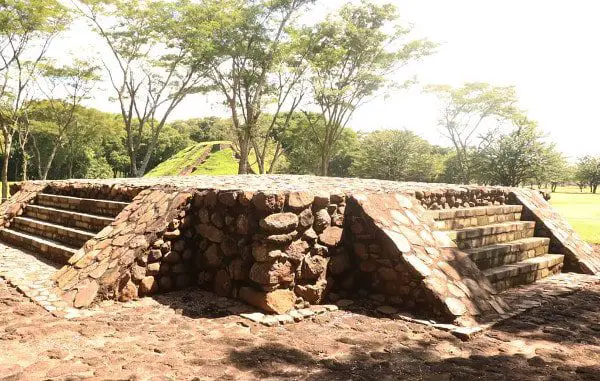
Cihuatan El Salvador.
Cihuatan was one of the first cities created after the Maya collapse; it was built on a low hill in the center of the Acelhuate Valley near the Lempa River.
Cihuatan is not as impressive as some archaeological sites in Honduras, Guatemala, or Belize; nevertheless, this site has plenty to offer its visitors!
In essence, if you have the opportunity to visit Cihuatan, do it; it is one of the most spectacular archaeological sites in El Salvador.




